- Home
- James A. Michener
Miracle in Seville Page 4
Miracle in Seville Read online
Page 4
‘Then, the skilled matador dismisses me with a masterly twist of his cape, which leaves me facing one of the picadors. I snort and paw the ground, trying to look fierce, and making sure I am not too far from the horse—lest my charge have such momentum that I destroy him—I lower my head and drive directly at that pointed spear. That spear hurts, dreadfully, but I am a brave bull, so after the picador drives me off, I slide right into the waiting cape and the matador and I do some Chicuelo passes and a series of four butterflies, first to one side of the matador standing unprotected before me, then to the other, a beautiful dancing until the crowd roars again.’
He was so intimately involved in being one of his bulls that he seemed to lose pounds and become a lithe creature, a young bull in full command of his powers. ‘Now I give the banderilleros a chance to display their skills, but if only the peons place the sticks I perform nothing special. If the matador himself wants to try, I move in trajectories so perfect that the crowd sees wondrous sights.’ He paused as if savoring the beauty of that moment, then continued, once again identifying totally with his bull.
‘Then comes the climax I’ve been waiting for. All my heroics lead to this, when the matador returns to the ring to face me with only that small muleta and the sword. Because I want the fight to end on a note of perfection, I follow the dancing muleta wherever it takes me, and in the closing moments when the matador stands unprotected with the muleta almost behind him so that I must pass his body before I reach the cloth, I charge straight and true—once—twice—three times till the crowd reaches the point of ecstasy.’
I paid him the courtesy of hearing him through, but when he did not explain how, as the bull, he escaped death in the final moments when the matador leveled his sword at the fatal spot in the bull’s neck, I asked him. ‘Simple,’ he said. ‘Seconds before that fatal moment arrives my spirit quits the bull’s body and returns to its place in my body—in the rancher’s box under the stands. From there I watch the triumph of my bull as the mules drag his dead body three times around the arena and out the gates to immortality. That’s how Mota bulls conducted themselves in the old days and that’s the way I’d act if I could be one of my bulls today.’
Looking sideways at Don Cayetano as we drove into the outskirts of Seville, I thought: This man is near crazy—he has a fixation, an obsession. He sits here beside me, a seemingly ordinary man, but he’s really inside the heart and mind of one of his bulls. If he were given to violence he could be quite dangerous. In fact, if he was near Lázaro López when the Gypsy maltreated a Mota bull I’m sure Don Cayetano would kill López. He said as much. He certainly seems crazy, but I won’t be able to say so in my article.
I had already learned of Don Cayetano’s tendency toward mysticism in a most revealing interview when I visited a priest in the village near the ranch. A young man with an obvious passion for rectitude in his little community, he spoke with a mix of enthusiasm and reverence: ‘It wasn’t easy for me, coming as a young seminary student to a church where the leading citizen was an elderly man as distinguished as Don Cayetano, and at first I was in awe of him, while he was suspicious of me. But when his daughter, Inés, was thrown from her horse and lived for several weeks hovering between life and death, I could not ignore my task of praying for her and giving what comfort I could to Don Cayetano and his wife, María Concepción. They may have thought I was too young, but since I was with them daily, and since I had known their daughter as a delightful young woman who had wanted me to officiate at her wedding, I stayed close to the ranch. When Inés died, I said the prayers at her grave and consoled Don Cayetano and Doña María Concepción as best I could.’
‘Were they shattered?’
‘Dreadfully. The light of the world went out for them, and I believe this accounted for the mysterious decline of Doña María. To this day it remains a mystery. My own belief is that in the heart of her being, where decisions are made, she gave up. You’ve heard the words “She wasted away”? She decided to die and she did.’
‘And Don Cayetano?’
‘It was then we became intimate friends. I had prayed with him daily and tended Doña María spiritually, advising them both to place their trust in the Virgin Mary. They did, and in Doña María’s final days a kind of benign grace settled upon them, as if they accepted the dual tragedy that had struck them. One day Don Cayetano told me: “Father Eduardo, your prayers have brought us into the arms of the Virgin Mary,” and he and Doña María became convinced that the Virgin herself had come into the sick chamber to guard over them. Doña María died in extraordinary grace and ease of mind. Don Cayetano assured me that in the death chamber he had found a friend for life, and at first I thought he meant me. Not at all: “In the moment before my wife died, I felt a presence come into our room; she felt it too. And when we looked, there stood the Virgin, clothed in blue and radiance. In a voice as clear as a bell she told us that since we had prayed with dedication and belief for her assistance, she had come to take Doña María home.” ‘
Father Eduardo added: ‘In the days after the funeral, daughter and mother lying side by side in the Mota crypt, Don Cayetano gave me a huge gift for the rebuilding of our little church and paid a substantial sum for a fine marble statue. The Virgin of Mota, the villagers call her, and if you look over there you can see her bestowing her blessing upon us.’
At this point the priest hesitated in a manner that made me suspect he had more to tell me, so I said as casually as I could: ‘You look as if you knew something more that might help my story,’ and he laughed, all tension gone: ‘That’s why you’re a good reporter—you see important things. Yes, there was something mysterious about the vision Don Cayetano had of the Virgin. In rural areas priests often meet parishioners who claim to have seen the Virgin. If they were all true, she would have to travel widely and endlessly, so we accept the accounts, praise the witnesses for their devotion to Mary, and say no more about it. But when the Don saw that I was trying to use that strategy with him, he took my arm roughly and said: “But I did see her. Come to the room where Inés died.” When I stood there he went to a corner and said with the greatest reverence: “She appeared in this corner, right through the solid wall. For that door was closed and I could see the windows. She walked from here where I’m standing to where you stand.”
‘ “Did she touch you?” I asked, and he said: “No, but she did take Inés in her arms. I saw her do it, and before she died, Inés told me: ‘I’m going back to the arms of Mary.’ She was here in this room, bringing comfort to us.”
‘What did you make of the story?’
‘The usual village sighting, except for one thing. When the Don sought a statue of Mary, the one you see through that window, he searched for a sculptor he could trust and told the man: “I want you to carve her just as I saw her,” and he struck a pose for the man that duplicated what he thought he had seen during her visit. And there she stands, just as he described her.’
I remained at the window for some time, staring at Don Cayetano’s Virgin, and she did indeed look as if she were protecting the entire village of Mota, but as I reached this conclusion Father Eduardo said: ‘I was so shaken by the Don’s religious fervor that I went to visit the sculptor to ask if he had seen anything strange about his customer, and he told me: “He was crazy, like the people they used to keep in cages. Because he kept telling me as I worked: ‘She held her head this way,’ or ‘When she bent down to embrace my wife her face had this kind of expression,’ and all the time he watched me work he posed this way or that to show me how she looked in real life. And then I knew he sometimes drank too much.” ’
‘But what did you think, Father?’ and the priest replied in a manner that told me he wished no further conversation: ‘That some men and women of great devotion have a strength greater than yours or mine.’
After my interview with the priest I believed that I had achieved a rounded portrait of my man, and a cable from my editor in New York had confirmed this: ‘Shenston
e: We think you have the Don nailed down. Paternalistic country squire. Respected by his neighbors. Loves bulls. Has an abiding faith in the Virgin Mary. Struck by a double tragedy, and doomed to see his taurine empire crumble despite heroic efforts to save it. Powerful story.’
Now, as we reached the area in Seville where the barefoot penitents gathered on Palm Sunday morning to drag their wooden crosses in the procession, I was about to plunge into the first of a bizarre series of linked phenomena which I can’t explain and which indicated that I had not yet fully understood the depth of Don Cayetano’s character. I saw only a few faces I recognized—a couple of generals and town hall functionaries—but even when I nodded to them they ignored me because they were already in a kind of trance. When three priests came out from the cathedral to bless the marchers, I noticed that Don Cayetano asked each one for his benediction. After the third priest added his blessing to the march, Don Cayetano raised his face upward as if appealing to heaven for some kind of special acceptance, and in this posture he began his procession with his cross dragging behind him.
He had marched for the better part of an hour, halting now and then for me to give him water and the towel I carried, so I was standing not far from him when the first extraordinary event occurred. We were near one of the small churches whose float would be going out that evening, and when he saw the beautiful Virgin who adorned it he suddenly fell to his knees and pleaded: ‘Blessed Virgin! Grant me one boon! Help the man who loves you so deeply.’
I cannot describe exactly what happened next—perhaps it was a flash of morning sunlight, but suddenly the Virgin’s face was suffused with a golden aura that hung about her head like a halo and a strange light bathed the round face of Don Cayetano, giving it an almost beatific cast. Nothing was said, but I could see that he had interpreted this light as a signal that she had heard his prayer and responded encouragingly. The light faded. The penitents resumed their march.
That night when we were at the Mota ranch, with its owner exhausted from his labors as a penitent, he abruptly resumed his analysis of what a perfect afternoon in a major arena would be if one were mysteriously in command of a string of six bulls: ‘You wouldn’t want it to be a series of perfect fights, each a duplicate of the others. Maybe the second and sixth bulls would be the exemplars, the ones they would talk about forever.’
‘That would leave the first matador with a bad afternoon, wouldn’t it? I mean, if he didn’t get one of the good ones when he’s maybe the best matador of the lot?’
‘Oh no! You misunderstand. All six would be honorable bulls. He’d be able to do with one and four whatever his talents allowed—great cape passes linked together, excellent work with the muleta. He’d not be left out.’
‘I’ve noticed that you often talk about linked passes, as if they were the ones that count.’
‘They do. In life, Mr. Shenstone, no matter what we’re doing, we so rarely get three or four episodes linked together meaningfully, one building beautifully on the other to a proper climax. A businessman has three bold successes, then falls flat on his face. A housewife bakes three cakes and the fourth falls flat on its face. My ranch foreman has two exquisite daughters, lovely brides and mothers, but the third is a whore in Lisbon. In the bullring the same. Two fine passes but the damned bull will not turn for the third. He simply will not turn, and the magic is lost.’ Shaking his head, he said grimly: ‘When I’m the bull, three perfect passes, then four, then if the matador is equal to it, five. The band plays. The photographs would last a hundred years.’
When I said that five passes like that would be worth photographing, he told me: ‘There’s to be a special fight in Málaga on the Sunday after Easter. Can you join me?’
‘That’s what I’m here for. I learn from seeing your bulls in action.’
‘I wish they were from the old stock. Our ranch dueled with Veragua and Concha y Sierra to determine who was best in Spain. Often we won.’ Apparently those memories were painful, for he changed the subject. ‘This may sound … what? Maybe insane? Maybe the folly of an old man dreaming of the past? But I will do anything to restore the honor of our family name.’
‘Like what?’
‘Late Thursday afternoon, when the bullfighters’ float leaves its church in Triana for the procession through the streets, I’ve volunteered to be one of the men who carry it on their backs. Double penance. The cross this morning. The float on Thursday.’
‘You’re trying to build a linked chain of good deeds to assure your bulls good luck?’
His round face dropped into an almost ugly glare: ‘Never say good luck! I do these things for heavenly response. I do not believe in luck. I believe in the intervention of the Virgin Mary on behalf of those who serve her.’
I accepted the rebuke, kept my counsel to myself, and used the offending phrase no more, but I did think that if ever there was a man in need of some good luck, it was Don Cayetano.
On Thursday afternoon when the float of the bullfighters was scheduled to begin its procession through Seville, he had his driver take us across the Guadalquivir River and into Triana, where the car stopped in front of the colorful little Church of the Toreros. Several dozen men in work clothes lounged near the church’s float with its depiction of the dead matador, and Don Cayetano spoke with them: ‘May I help you carry your float?’
‘You’re an old man. The burden would kill you.’
‘I’m Don Cayetano Mota, of the bull ranch, and I must do penance.’
Upon hearing his name, the men, most of them aficionados of the Triana matadors, gathered about, and one man said: ‘But the papers told us you already carried your cross on Palm Sunday.’ He explained: ‘My bulls need whatever help they can get,’ and the men laughed but he did not.
He and I went into the little church from which the Virgin had already been taken to be the reigning queen on the float, and at the spot she had vacated he knelt and prayed for a long time in words I could not hear. At the end he flung his arms in the air and cried: ‘Holy Virgin! One boon!’ His voice echoed in the emptiness and I was about to rise when from the vacant spot came a woman’s voice as clear as the Angelus sounding over the dewy fields of morning: ‘I hear you.’ That I heard these words there can be no doubt.
Looking around quickly in the church to see if there might be someone else who had heard what I believed I had, I caught a fleeting glimpse of a bent old woman with a black shawl covering her head who must have been seated near the door in the rear. In a medieval romance she would have been described as a crone or, more poetically, a beldame. I was eager to question her but had no opportunity, for as I moved toward her she fled from the church with an alacrity that surprised me, and I wondered if she had heard something of such significance that she was impelled to share it with her neighbors.
Disappointed that I had lost her, I returned to where Don Cayetano sat as if in a trance and I tried to question him regarding the mysterious voice. But he refused to speak, so I was left in a state of bewilderment. Deciding to leave the Don alone with his prayers, I turned toward the door at the back of the church and saw entering breathlessly, as if she had been running, the kind of woman men do not forget: about thirty, tall, with flashing eyes that seemed to throw sparks and with two braids of raven-black hair that reached down to her waist. Her dress was as dramatic as her figure: a colorful shawl about her shoulders, a brilliant green bodice tightly fitted at the waist, and a skirt that flowed down to her toes, where the hems of several lace-trimmed petticoats were visible. I recognized this as the traditional costume that Gypsy fortune-tellers adopted when they moved into a city. Hers was embellished by an upright tortoiseshell comb in her hair and a pair of huge, glistening earrings.
What I noticed most as she pushed open the wooden door and ran into the church was the grace of movement, the elegance with which she drew her right hand to her cheek as if apologizing for having intruded upon us. But this courteous gesture did not prevent her from coming near us to satisfy her curiosity
about the two strangers. She turned to study Don Cayetano with special care, then walked boldly past us, flashing a dazzling smile, and left the church, her swirling petticoats brushing my leg as she went past.
Now I had to interrupt the Don: ‘Who was that?’
‘Some Gypsy. Couldn’t you see by her dress?’
‘Why did she rush in here to spy on us?’
‘Didn’t you see the old woman watching us? And leaving in a hurry to warn the Gypsy?’
‘But why did the Gypsy run over so fast to spy on us?’
‘It’s their church, you know. They come to worship here, too.’
Since it was now only a short while before the bullfighter’s float would start its sacred journey through the streets of Seville, we left the Virgin’s church to mingle with the crowd that had gathered to serve as her guard of honor. As we idled there, surrounded by Gypsies, I scanned the crowd to see if the woman who had spied on us was among them, but I did not find her.
Because I was now so much closer to the statue of the Virgin than I had been before, I realized for the first time how beautiful she was in her dress of heavenly blue with its simple adornments in gold. While admiring her I recalled the handsome color plates in my college text on Renaissance art that showed the Virgin as Regina di Cielo, the Queen of Heaven, and she had been garbed like this. Suddenly I saw something that astounded me. She was cross-eyed! Yes, the peasant sculptor who had carved her two centuries earlier had made her slightly cross-eyed, her right eye looking straight ahead while her left wandered.
Nudging Don Cayetano, who was talking with the group of muscular young men who would be carrying the float, I said: ‘Am I crazy, or is she cross-eyed?’
To my surprise he turned away from the bearers, smiled warmly and said: ‘Yes, the faithful in Triana call her La Bizca, our word for—’ and with forefingers pointing at each other in front of his face, he gave a surprisingly accurate depiction of crossed eyes.

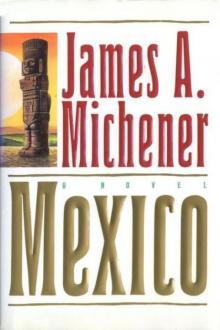 Mexico
Mexico The World Is My Home: A Memoir
The World Is My Home: A Memoir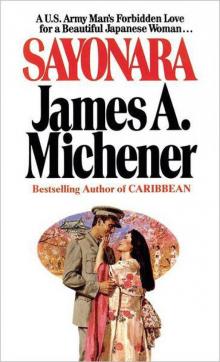 Sayonara
Sayonara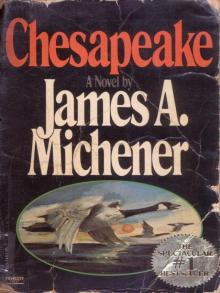 Chesapeake
Chesapeake The Novel
The Novel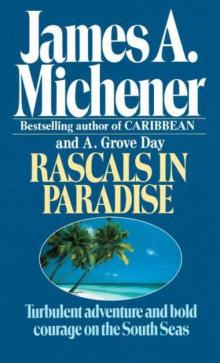 Rascals in Paradise
Rascals in Paradise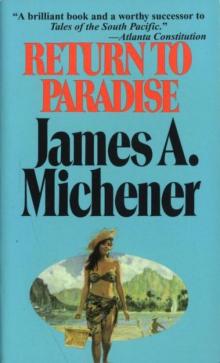 Return to Paradise
Return to Paradise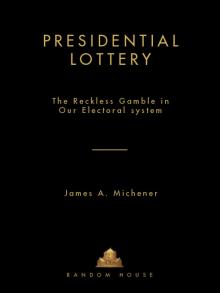 Presidential Lottery: The Reckless Gamble in Our Electoral System
Presidential Lottery: The Reckless Gamble in Our Electoral System The Source
The Source Poland
Poland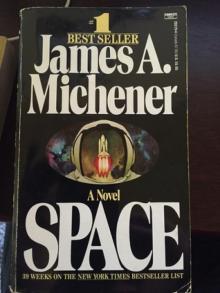 Space
Space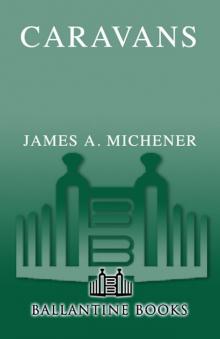 Caravans
Caravans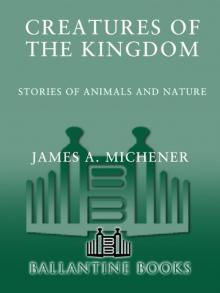 Creatures of the Kingdom: Stories of Animals and Nature
Creatures of the Kingdom: Stories of Animals and Nature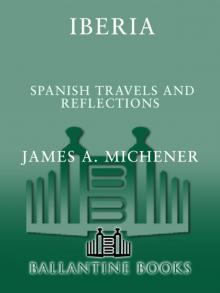 Iberia
Iberia Hawaii
Hawaii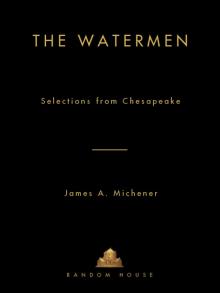 The Watermen: Selections From Chesapeake
The Watermen: Selections From Chesapeake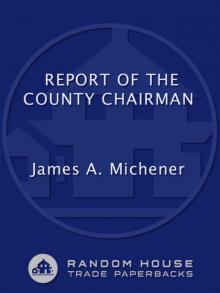 Report of the County Chairman
Report of the County Chairman The Covenant
The Covenant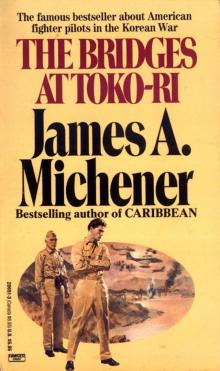 The Bridges at Toko-ri
The Bridges at Toko-ri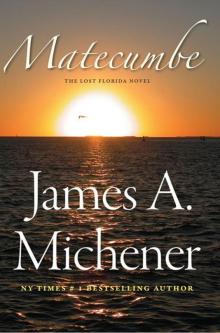 Matecumbe
Matecumbe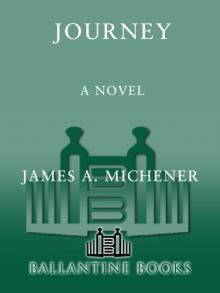 Journey: A Novel
Journey: A Novel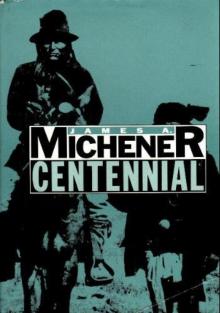 Centennial
Centennial Sports in America
Sports in America Texas
Texas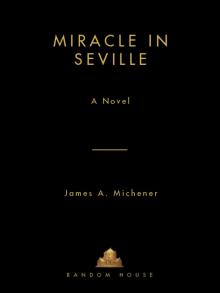 Miracle in Seville
Miracle in Seville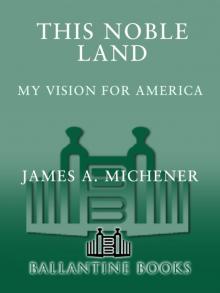 This Noble Land: My Vision for America
This Noble Land: My Vision for America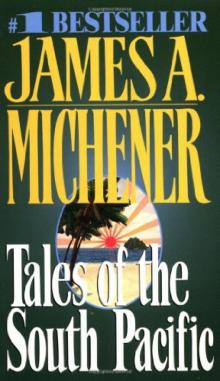 Tales of the South Pacific
Tales of the South Pacific Bridges at Toko-Ri
Bridges at Toko-Ri Space: A Novel
Space: A Novel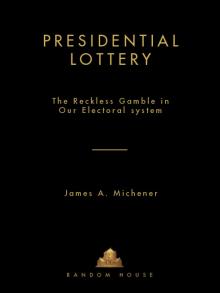 Presidential Lottery
Presidential Lottery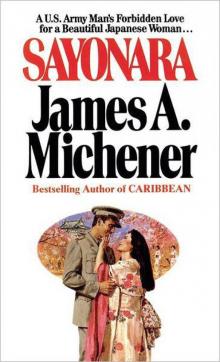 Sayonara: A Novel
Sayonara: A Novel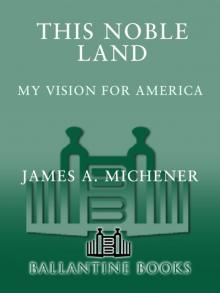 This Noble Land
This Noble Land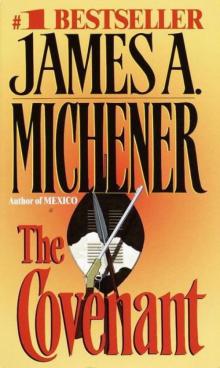 The Covenant: A Novel
The Covenant: A Novel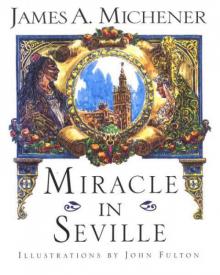 Miracle in Seville: A Novel
Miracle in Seville: A Novel The Bridge at Andau
The Bridge at Andau Source
Source The Source: A Novel
The Source: A Novel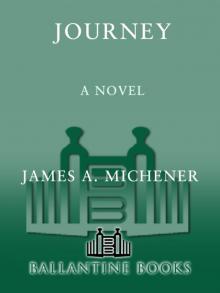 Journey
Journey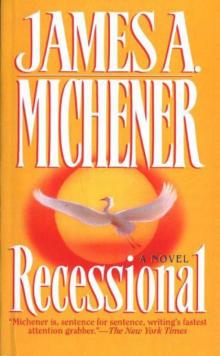 Recessional: A Novel
Recessional: A Novel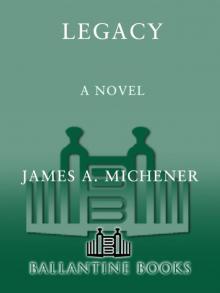 Legacy: A Novel
Legacy: A Novel The Bridges at Toko-Ri: A Novel
The Bridges at Toko-Ri: A Novel Poland: A Novel
Poland: A Novel